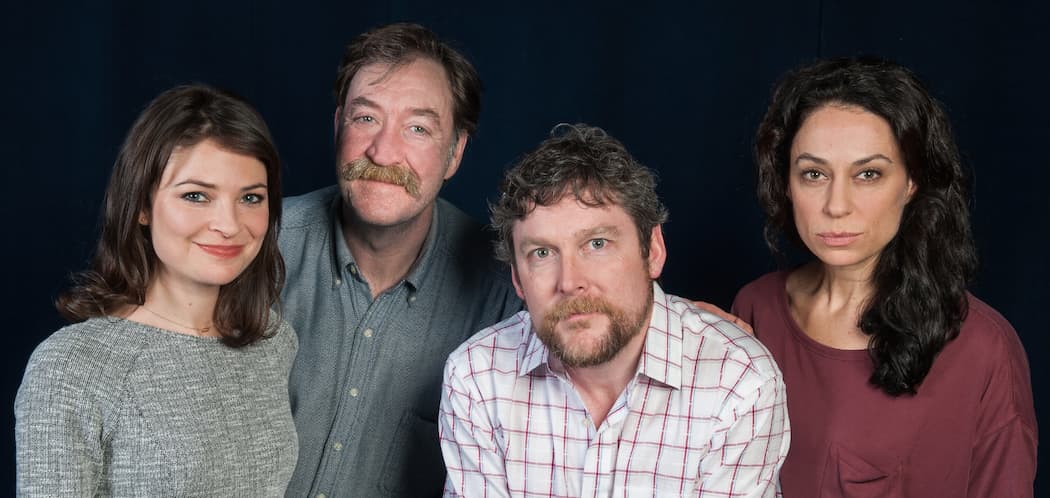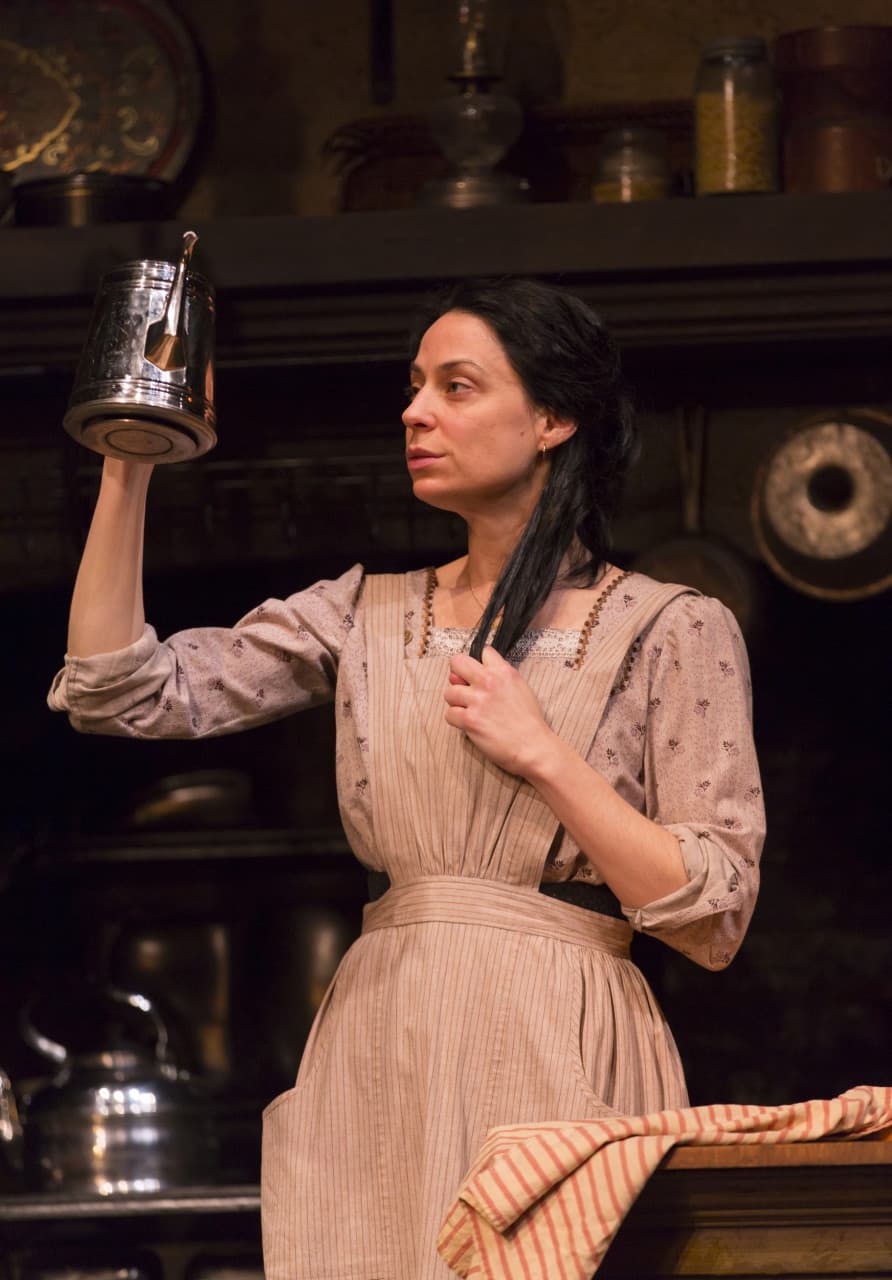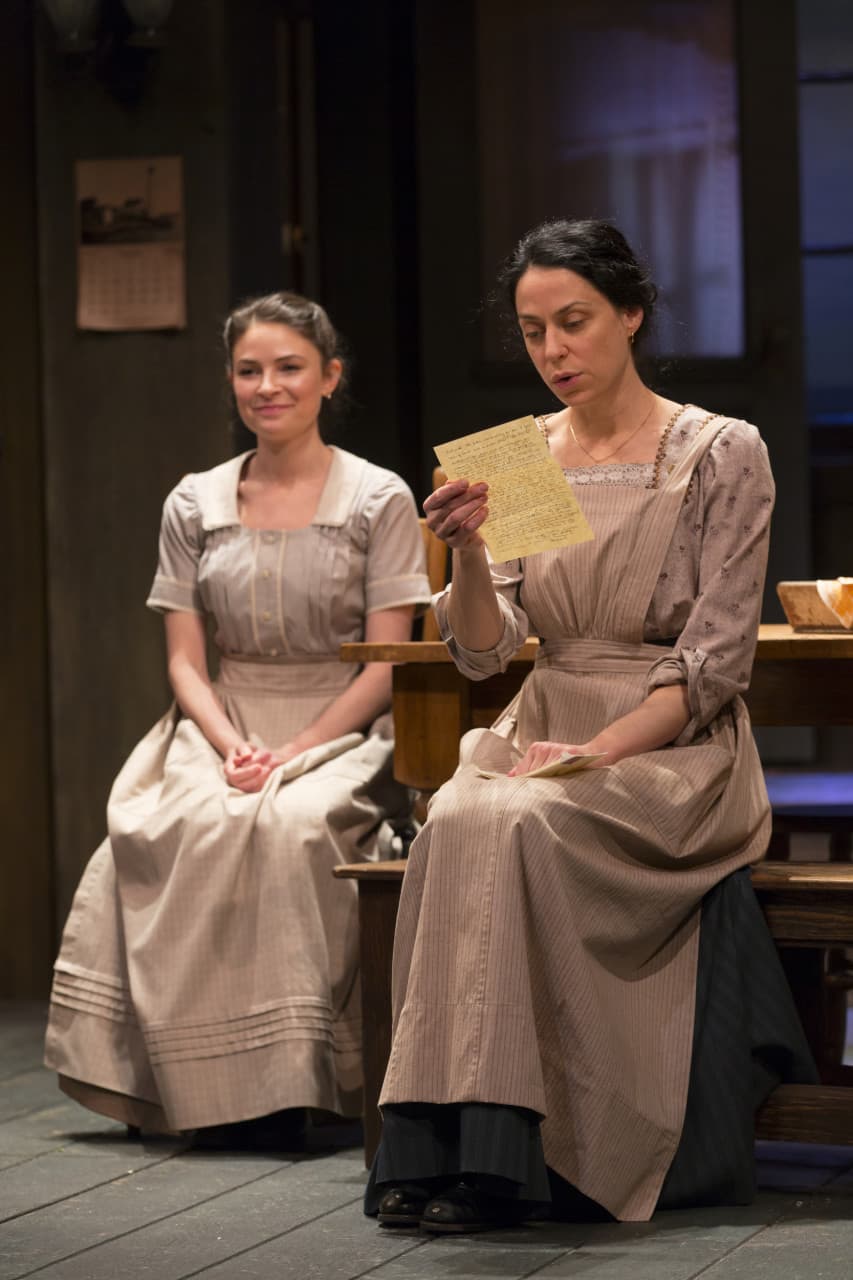Advertisement
Ronan Noone Audaciously Takes On Eugene O’Neill

Playwright Ronan Noone has been a fixture of Greater Boston’s theater scene since 2002, when “The Lepers of Baile Baste,” his play about the legacy of Catholic clerical sex abuse in his native Ireland, and “The Blowin of Baile Gall,” about immigration in contemporary Ireland, made their professional debuts on local stages. Since then, his award-winning plays have been produced in New York, Chicago, Austin, Edinburgh, the Philippines and London. Named one of the Huntington Theatre Company’s first group of playwriting fellows in 2003, Noone has continued his association with the company, which produced the world premiere of his first two American plays, “Brendan,” about an Irish immigrant finding his way in Boston, and “The Atheist,” an over-the-top tale of rogue journalism starring Campbell Scott, in 2007.
Scott directs Noone’s new play “The Second Girl,” which is now in preview performances at the Huntington’s Wimberly Theatre at the Calderwood Pavilion in the Boston Center for the Arts. It officially opens January 28.
“The Second Girl” is set against a backdrop of “Long Day’s Journey Into Night,” Eugene O’Neill’s monumental drama about a harrowing day and night in the lives of “four haunted Tyrones,” a family based on O’Neill’s own. Noone has brought to life three minor characters from O’Neill’s masterpiece: Cathleen, the young and lively “second girl,” recently arrived from Ireland; her embittered Aunt Bridget, the Tyrones’ cook and maid; and Jack, the family chauffeur. Their story unfolds in the kitchen of the Tyrones’ summer home over 24 hours. The playwright sees the two plays as “in conversation with each other.” But theatergoers need not be familiar with O’Neill’s drama to appreciate Noone’s play. “The Second Girl” stands on its own.
Ronan Noone took a break from rehearsal at the Calderwood Pavilion to talk with the ARTery about “The Second Girl.” The conversation has been edited and condensed.
Maureen Dezell: How and why did you decide to dive into this particular play?
Ronan Noone: Well, first there was a practical reason, in terms of being a playwright. I wasn’t going to get plays on in Ireland because I’m not in Ireland. And I wasn’t going to get plays on so easily in America because I’m not really an American playwright. But there is a world that I could talk about with a little more knowledge than others—the experience of what it means to uproot and start again.
I was looking for a way to tell a story not just about Irish America but about the Irish-born in America. I started reading “Long Day’s Journey Into Night” again, and I saw these girls, and I thought, “I could really tell their story.” I had to let the kind of idea settle and think about whether it was even possible. And then I did think about it and thought, “Whoa, that’s kind of enormous”—and that made it even better. And then I decided to take it on.
You took on a play that’s been called the consummate American family drama, that’s based not just on any family, but on Eugene O’Neill’s family. He is, arguably, the greatest American playwright, and this is his greatest play. As Tony Kushner has said, it’s part of the pantheon of world literature. That’s pretty audacious, Ronan.
Audacious. I like that word.
But there’s universality to it. The Chinese love it. The Swedes love it; the Swedes were the first to put it on.
Were you intimidated by the enormity of it?

I wasn’t bowled over because I set three or four rules for myself. One, I was going to learn from the master while I was doing it. So I treated it as if O’Neill was on my shoulders and directly involved with what I was doing. So I was watching how he was writing a play that seemed repetitive and plotless in a way—and yet, every movement, every line was thought out. As O’Neill said, “it’s a play of old sorrow, written in tears and blood.” Two, was to go in with the greatest respect because in no way was I going to be reductive. And then there was the idea that I was going to take on these two girls and bring them from a place I knew. They’re from Connemara. They traveled the roads outside of Clifden. I know the roads they walked to get the train, to get the boat.
Once I had those rules then it became a question of research. I went to Synge’s “The Aran Islands” and Tim Robinson’s books about Connemara to get more insight into where I came from. Then to American sources. And to other plays, like Brian Friel’s “Dancing at Lughnasa.”
So there was an accumulation of small events. All of these started having in some way an influence on what was going on in the page. And then all I needed to do was tap into me. I have a certain fascination with the question of: what as an immigrant have you left behind? What does that do to you emotionally? Does it leave you with regret and if so, how do you box that away? How do you articulate that?
One of the welcome departures in your play from any number of Irish and Irish American plays and stories is that it’s about Irish immigrant women.
What’s fascinating is that 60 percent of Irish immigrants were women — single women. All other immigrant groups, the women came over married. Here they’re coming over single. And almost no one mentions them.
It’s the great, untold story of the Irish in America. Tens of thousands of girls like Bridget and Cathleen growing up in rural Irish farmhouses with dirt floors, leaving their families forever, and then six months later they’re serving dinner in the summer homes of wealthy families like the Tyrones.
Or working in factories. They cannot stay home. They have nothing in terms of a dowry. They don’t want to live with their parents. They’d like to have some opportunity. And they’re trying to eke out a life for themselves because there is no choice.
Particularly for some, like Bridget.

Americans might not understand that Bridget couldn’t just bring her child over with her. She couldn’t live there anymore and be the scarlet letter. She left in order for the child to have a better life in Ireland. The shame is so enormous that she just had to go. Bridget’s family don’t write to her, they don’t mention her in other letters. Nobody tells her about her son. In the play, we have to show that that’s not because they’re being cruel, but because they believe if you don’t talk about it, you’ll be better off. And Bridget is stoic; let’s not talk about it, she says. Let’s move forward and move on.
And Bridget drinks.
Bridget drinks. And it is drink that has brought her to the door of somebody she obviously loves. She cannot express that, particularly when she’s sober. She can be more honest when she’s drinking but she hates the shame of that. She has enough grace to drink without it being gauche.
But the habit isolates her. It keeps her from moving on from the kitchen. She’s not unlike Mary Tyrone in that. Cathleen—who you describe as “ambitious, a dreamer, a parvenu in the waiting” and “perfect for America”—on the other hand, will move on. She’ll try to fulfill her dreams.
She’s ambitious.
She’s already made a connection with the father, James Tyrone, around the theater.
James Tyrone recognizes these girls. He knows their world. Like him, they came over. There’s a difference between the first generation and right off the boat, between my daughters and me. He’s the one I identify most with in the play.
A former arts and culture reporter for the Boston Globe and Boston Phoenix, Maureen Dezell is the author of Irish America: Coming Into Clover, and a senior editor at Boston College.
